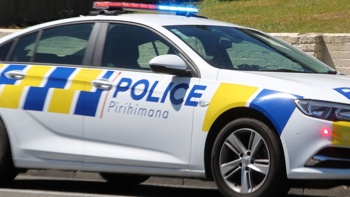A few weeks ago I caught a slightly distressed silvereye inside the netted cage in which I grow berries. Yes, I know: the cage was set up to stop these avian fruit molesters getting hold of my fruit in the first place, but there was a tiny gap at the bottom and the silvereye got in.
I caught the bird with my butterfly net and was about to release it, when I noticed it had an aluminium band around its right leg with the Number A-129527. That just brought back all the memories of my avian past – I had been banding birds for most of my life. In Holland, Spain and later in New Zealand. Kiwi in Northland, plus all sorts of birds on the Poor Knights and Hauturu.
The idea for banding birds can be quite simple: to learn a heap of stuff about their lives. Where do they go? Have they got the same partner every breeding season? What’s their migration route, How long do they live and do they occupy the same territory?
How about some deeper research that widens the scope considerably: Population studies; measure decline, recovery of species; climate fluctuations and predator effects on bird populations; assess the impact of fisheries activities on seabird populations or… assess the success rate of translocations in new habitats.
Mind you, there are also some cool stories that come out of the banding schemes:
A gannet band was retrieved from the stomach of a Tiger Shark; makes kind-of sense, but good to get the “evidence”!
Band 13-70808 was issued in 1987 and used to band a female Paradise Shelduck at Diamond Lake, Otago, in January 1988. 30 years later, the band mysteriously emerges from a couch… in Wynne, Arkansas!
Band R-33266, together with a wrap-around white plastic band, was placed on a female Northern Royal Albatross in February 1974 on East Sister Island, Chatham Islands. 20 years later, the same bird was re-sighted by Chris Robertson on its nest with an egg. Fast-forward another 23 years, and these bands were found on a brittle bone on a beach northwest of Whanganui, 816km from where the bird was last seen. How long did this albatross live for, how did it end up on the beach, and how long have these bands been buried for?
I remember banding those huge grey herons in the Netherlands with a team of nutcase students and getting bands back from Morocco and further south in Africa; One gave us a village name and the comment: “shot, cooked and eaten” – imagine!
I have begun my journey to become a bird bander again. Register with DOC – go on-line and find out how to do all this: https://www.doc.govt.nz/our-work/bird-banding/
Take your Radio, Podcasts and Music with you









